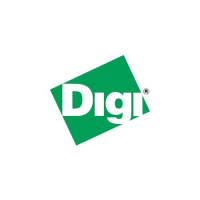Networking Master/slave networks
Digi XBee3® 802.15.4 RF Module User Guide
63
If A1 is 0x06 (bit 0 clear, bit 1 set, and bit 2 set), then the active scan will accept a beacon from any
channel, providing the PAN ID matches. This is useful if the PAN ID is known, but not the channel.
If A1 is 0x07 (bit 0 set, bit 1 set, and bit 2 set), then the active scan will accept a beacon from any PAN
ID and from any channel. This is useful when the network does not matter, but the one with the best
signal is desired.
Whenever multiple beacons are received that meet the criteria of the active scan, then the beacon
with the best link quality is selected. This applies whether A1 is 0x04, 0x05, 0x06, or 0x07.
Before the End Device joins a network, the Associate LED will be on solid. After it joins a network, the
Associate LED will blink twice per second. You can also query the association status with AI command
or by observing modem status frames when the end device is operating in API mode.
If association parameters are changed after the end device is associated, the end device will leave the
network and re-join in accordance with the new configuration parameters.
After an end device successfully joins a network, the DH and DL parameters on the device are updated
to point towards the address of the coordinator it associated with. This allows communication to the
coordinator to occur automatically in Transparent mode, and ensures that indirect messaging poll
requests are sent to the correct address—see Direct and indirect transmission.
Additionally, after associating, an end device has MY command set to 0xFFFE, indicating that the
newly associated end device should use its 64-bit address. After associating, if you want a 16-bit
address for the end device, set MY again.
Note MY is reset to 0xFFFE if the end device needs to leave and re-associate with the coordinator.
If a coordinator changes channel or PAN ID, the end device is not informed of the change and indicates
that it is still associated. You can set DA (Force Disassociation) on the end device to force it to leave
the network and attempt to join again, validating that the end device can still communicate with the
coordinator.
Coordinator association
A device becomes a coordinator and allows association if CE is 1 and A2 has bit 2 set. See the following
table and A2 (Coordinator Association).
Bit Hex value Meaning
0 0x01 Allow PAN ID reassignment
1 0x02 Allow channel reassignment
2 0x04 Allow association
By default, A2 is 0, which prevents devices from associating to the coordinator. So, if CE is 1 and A2 bit
2 is 0, the device still creates a network, but end devices are unable to associate to it.
Note In this configuration, depending on the value of SP command the device might send messages
indirectly—see Direct and indirect transmission.
If A2 bit 2 is set, then joining is allowed after the coordinator forms a network.
If A2 bit 0 is set, the coordinator performs an active scan. The active scan process sends a beacon
request to the broadcast address (0xFFFF) and the broadcast PAN ID (0xFFFF) and listens for beacons
responses. This process is repeated for each channel specified in SC.

